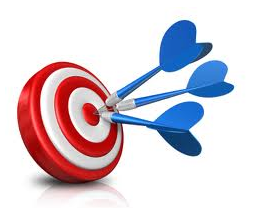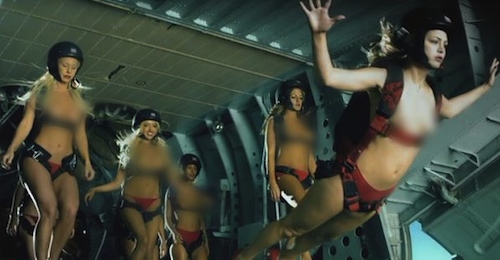
Just open a magazine or switch on the television today and it’s clear that advertisers believe that sex sells. Axe body spray, Calvin Klein, Wonderbra… There are literally dozens of brands that rely on sexual imagery to draw attention to their products and which often, at least implicitly, promise to increase the consumer’s sex appeal. An array of different sexual messages of varying degrees of subtlety have been used over the years in advertising, but which ads really changed the game when it came to sexual content? Which ones do we still remember, even years later? Which ads are or will be seen as watershed moments, decades after their release? And crucially: which ones helped to sell more products? Let’s take a look at the most sexually suggestive ads — both from our time and earlier eras — while examining what it is that makes each one work.
10. Woodbury Soap – Skin You Love to Touch (Launched 1911)
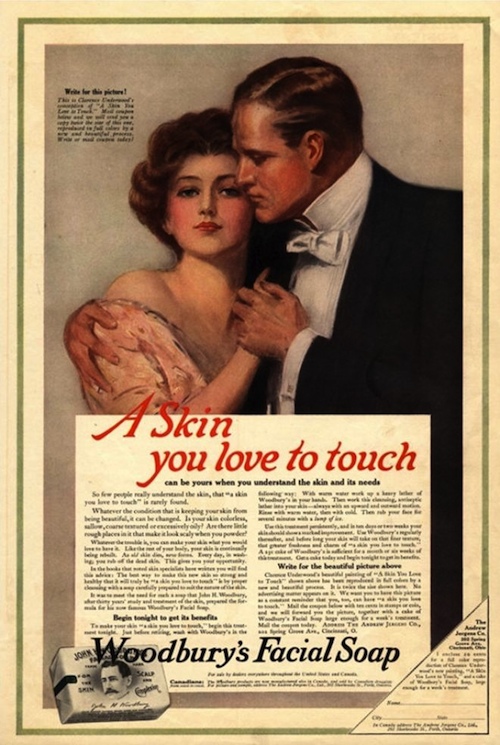
The year 1911 marked a milestone in history: the launch of the Woodbury’s Soap “The skin you love to touch” campaign, which has been credited as the first time sex appeal was openly used in advertising. With a headline penned by Helen Lansdowne Resor for the J. Walter Thompson Company (now JWT), this sensual series of print ads appealed to the sensibilities of the female demographic as no other ad had done up until that point — by associating the product with romantic fulfillment. The vintage ad pictured above also shows how much social standards have changed in 100 years! Today, commercials must feature pop singers and supermodels stripped down to their panties in order to grab the viewing public’s attention. The 1911 Woodbury’s Soap ad depicts hand-holding in a fairly chaste manner, yet it was daringly sexual for its time.
9. Maidenform – I Dreamed I Went… (1949-1969)
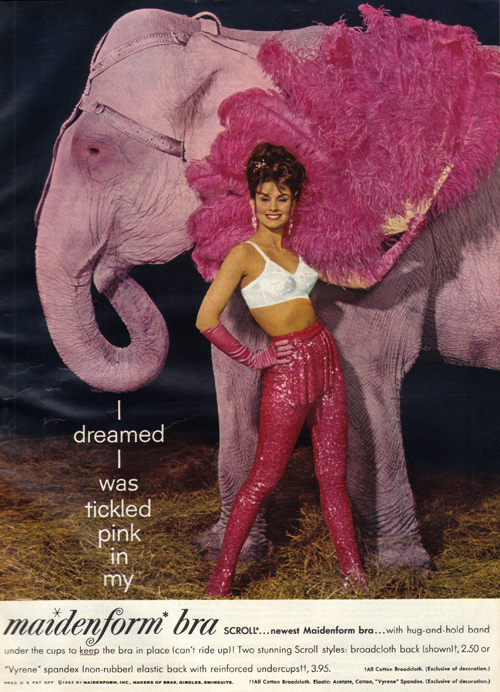
Most of us are afraid of being even half-naked in public, but bra manufacturer Maidenform’s “I dreamed…” campaign made itself memorable by embracing the concept. The ads featured models in initially somewhat everyday — but later more heroic — “dream sequences,” clad only in their bras from the waist up. They were so iconic that the campaign ran from the 1940s all the way through to the late ’60s, with 163 print ads created in total. The main selling point — and the reason the ads were so powerful — was the way the women appeared in social situations. Female sexuality had been used in advertising before, but putting it so brazenly into the public arena was truly innovative. Within the context of a burgeoning feminist movement, women all over America could now picture themselves as engineers, firefighters or boxers. Ads representing women in their underwear gleefully performing the activities associated with such traditionally male roles was the perfect way to make the target audience feel more liberated… and prompt them to buy the product by association.
8. Clairol – Does She…or Doesn’t She? (Launched 1956)
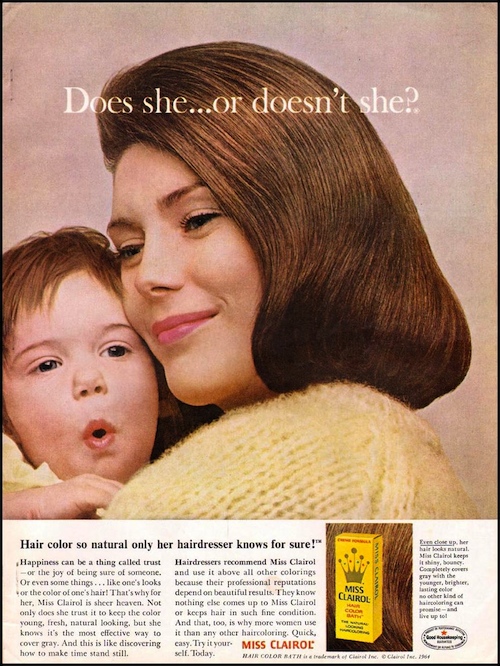
The legendary catchphrase for Clairol, “Does she…or doesn’t she?” was supposedly inspired by the copywriter Shirley Polykoff’s mother-in-law grilling her then husband-to-be about whether she dyed her hair — and bear in mind that the two women had only just met! The ads washed away the misgivings of millions of American women who were uncertain about using hair dye. Yet it was the sexually suggestive overtones — which almost ran counter to the visual depictions of wholesome, girl-next-door types — that arguably made people sit up and take notice. It was surely no coincidence that sales of Clairol skyrocketed by 413% in the six years after the campaign was launched, and half the women in America were soon changing their natural hair color. The campaign was also voted the ninth best of all time by marketing magazine AdAge. Who would have thought that one embarrassing situation could inspire so much?
7. Calvin Klein – Nothing Gets Between Me and My Calvins (1980)
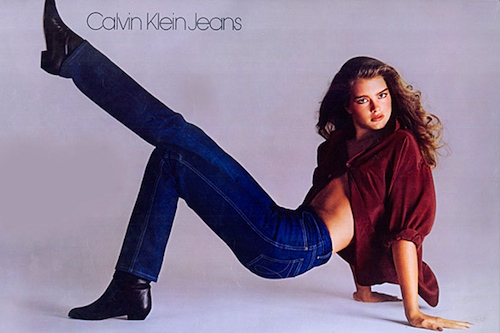
“You want to know what comes between me and my Calvins? Nothing.” As cringe-worthy (not to say somewhat creepy) as it was to hear 15-year-old Brooke Shields talking about going commando, this ad campaign helped to re-launch Calvin Klein as a visible brand, by connecting its clothes explicitly to sexuality. This 30-second TV spot created in 1980, together with others directed by Richard Avedon, attracted numerous complaints and was ultimately banned. However, the “shockvertising” campaign, which also included print ads, was responsible for Calvin Klein’s revenue reportedly growing by 300 percent in three months. The company is of course also one of the leading designer clothing brands in the world today, so their ongoing technique of using controversy to stimulate consumer buzz must be working. (A side note: wouldn’t wearing jeans this tight without underwear be kind of…um…itchy?)
6. Levi’s – Laundromat Commercial (1985)
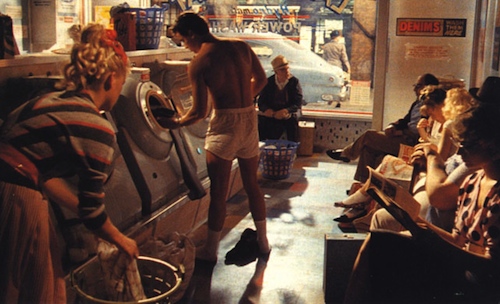
In the early 1980s, Levi’s was struggling with its younger demographic, which saw the brand as “uncool” and tied to old-fashioned stuffiness. However, rather than shying away from their popular retro image, the company tackled it head-on — while also adding a modern sexual twist. The commercial for their Classic 501 jeans, created by Bartle Bogle Hagarty, featured hot young model Nick Kamen dressed as a greaser and stripping down to his underwear in a crowded laundromat. This memorable ad was festooned with ’50s stereotypes — not to mention heady cultural ideas such as rebellion and sexual awakening. Whatever the subtleties of its message, steamy sexuality abounded in the commercial, and it worked: within a year of its release, sales of Levi’s jeans had jumped by 800 percent. The Marvin Gaye soundtrack (“I Heard It Through the Grapevine”) and beefcake performance from a young teen idol were clearly just the thing to connect with audiences — particularly female and gay male ones.
5. Paco Rabanne – What is Remembered is Up to You (1988)
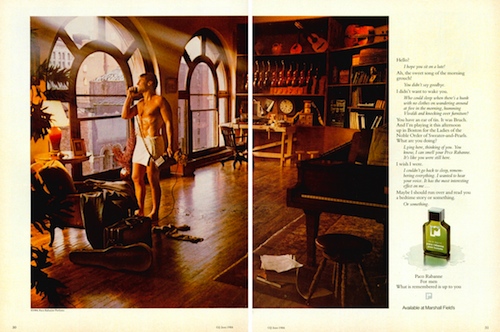
This teasingly erotic campaign from the 1980s played with the idea that what audiences imagine is always sexier than anything an advertiser can throw in their faces. The magazine and TV ads featured witty telephone conversations between two glamorous-seeming protagonists, with one of the lovers always off-screen or not visible on the page (and an empty or missing bottle of Paco Rabanne never far from the picture). It was what was not there that worked to create the intrigue of the campaign, which was replete with hazy sensuality. With their ambiguity and air of class and sophistication, the ads had the sensibility of a dreamy romance novel. The Advertising Educational Foundation underlines that the major strength of the ads was their aura of mystery: they left audiences speculating endlessly as to what the person on the other end of the phone might look like — and even whether they were male or female.
4. Cadbury Flake – Telephone Commercial (1987)
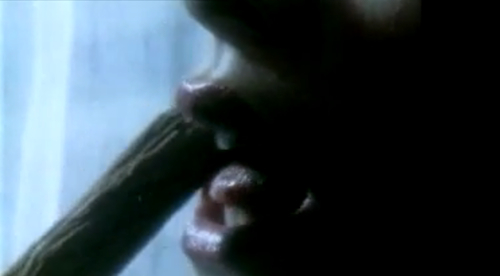
In the real world, Cadbury Flake chocolate bars are not particularly viewed as sex objects: they melt easily, crumble into dust at the slightest pressure, and leave unpleasant looking stains on bed sheets. However, in the world of advertising, Cadbury has been happy to exploit their vaguely phallic appearance for the best part of 50 years, with TV commercials that make them out to be sexual enhancers that could compete with the likes of Viagra. Yet, it was with this famous 1987 spot that advertisers really turned up the heat, in a commercial featuring a scantily clad woman privately enjoying a Flake while ignoring a ringing telephone. “Who is this woman?” we wanted to know. “Who’s calling her?” “And what does the lizard crawling over the telephone represent?” With lingering close-ups, the sense of secret pleasure was palpable. It was a classic for lovers of both chocolate and blatant sexual innuendo everywhere, and the “Flake Girl” had such a high recall among British audiences that she was revived just three years after she had been killed off in 2004.
3. Diet Coke – Break Commercial (1994)
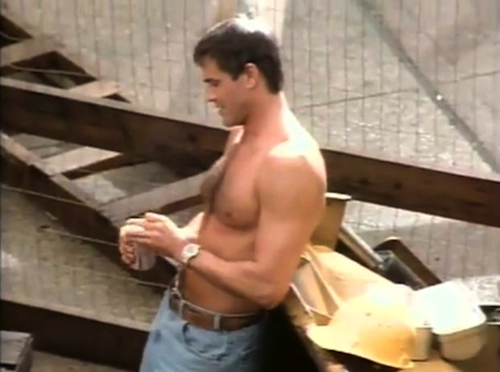
Anyone who watched TV in the 1990s will remember this commercial. With its portrayal of female office employees unashamedly ogling a sexy construction worker who takes his T-shirt off to down a refreshing Diet Coke, it turned the normal paradigm of advertising on its head. The controversial ad was actually deemed demeaning to men by some, but the intoxicating effect it had on audiences is made plain by the fact that it was voted the sixth best cinema advertisement ever in a 2009 poll by Digital Cinema Media (DCM). When a commercial less than a minute long stays embedded in the public consciousness 15 years after its released, it’s probably a pretty effective use of a company’s marketing budget.
2. Agent Provocateur – Proof (2001)
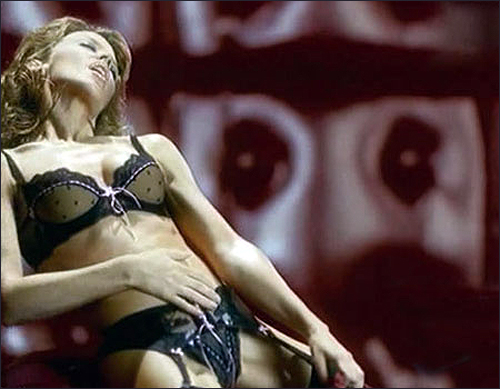
For many men, there are few sexier sights than Kylie Minogue dressed in lingerie. The raunchy 2001 cinema commercial “Proof” — featuring the Aussie singer wearing only the scantiest of Agent Provocateur’s underwear while rampantly riding a mechanical rodeo bull — was therefore always going to be a sure-fire hit. This ad was cheeky but still highly sexual charged — a winning combination few other commercials have managed to pull off, even in our modern day and age. It was voted the best cinema commercial ever in DCM’s 2009 survey, suggesting that the simple formula of advertising an erotic product in a mischievously sexy way has some staying power in people’s minds. At the end of the commercial, Kylie asks the men in the audience to stand up — and what better way to challenge male viewers to purchase something for their partners?
1. Clairol Herbal Essences – A Totally Organic Experience (1990s-2000s)
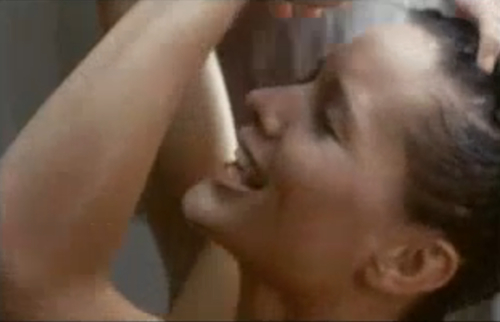
This funny series of ads from the late 1990s and early 2000s broke one of advertising’s last taboos by actually depicting an orgasm on screen — or at least one the was so heavily implied that it was impossible to ignore. The tongue-in-cheek but still overtly sexual commercials featured women washing their hair with Herbal Essences and moaning in pleasure as a result, with the climactic noises heard by others on-screen. According to critic Bob Garfield of Advertising Age, the campaign, developed by Wells Rich Green BDDP in New York, was pure “shock advertising” — but it certainly focused attention on the pleasure of using the product. Despite attracting complaints, the risqué ads were seen as a success by Clairol executives. Herbal Essences products tripled their market share during the first five years of the campaign and became one of the leading shampoo brands, second only to Pantene. And as if their earlier commercials weren’t enough, a 2004 spot cheekily upped the ante with the line, “A multiple organic experience.”
Bonus: Fleggaard – Nude skydiving (2008)
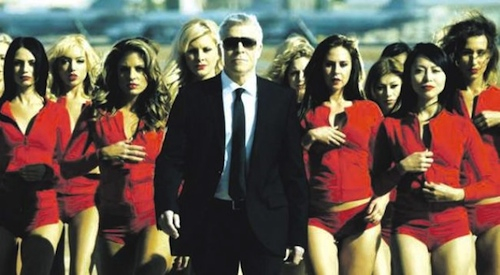
This Danish web commercial for supermarket company Fleggaard has been hailed the sexiest ad ever in the pages of no less of an authority than British tabloid rag The Sun — and millions of internet users across the globe seem to agree. The reason? Simple: it features dozens of topless large-breasted female skydivers jumping out of an airplane. It’s not a particularly great ad, and it barely seems to have any connection to the brand it’s trying to promote, but it’s still one of the most upfront depictions of the naked female form we’ve ever seen in advertising. Despite only being available on the web, this is one use of sex in advertising we’re sure to remember for some time.
